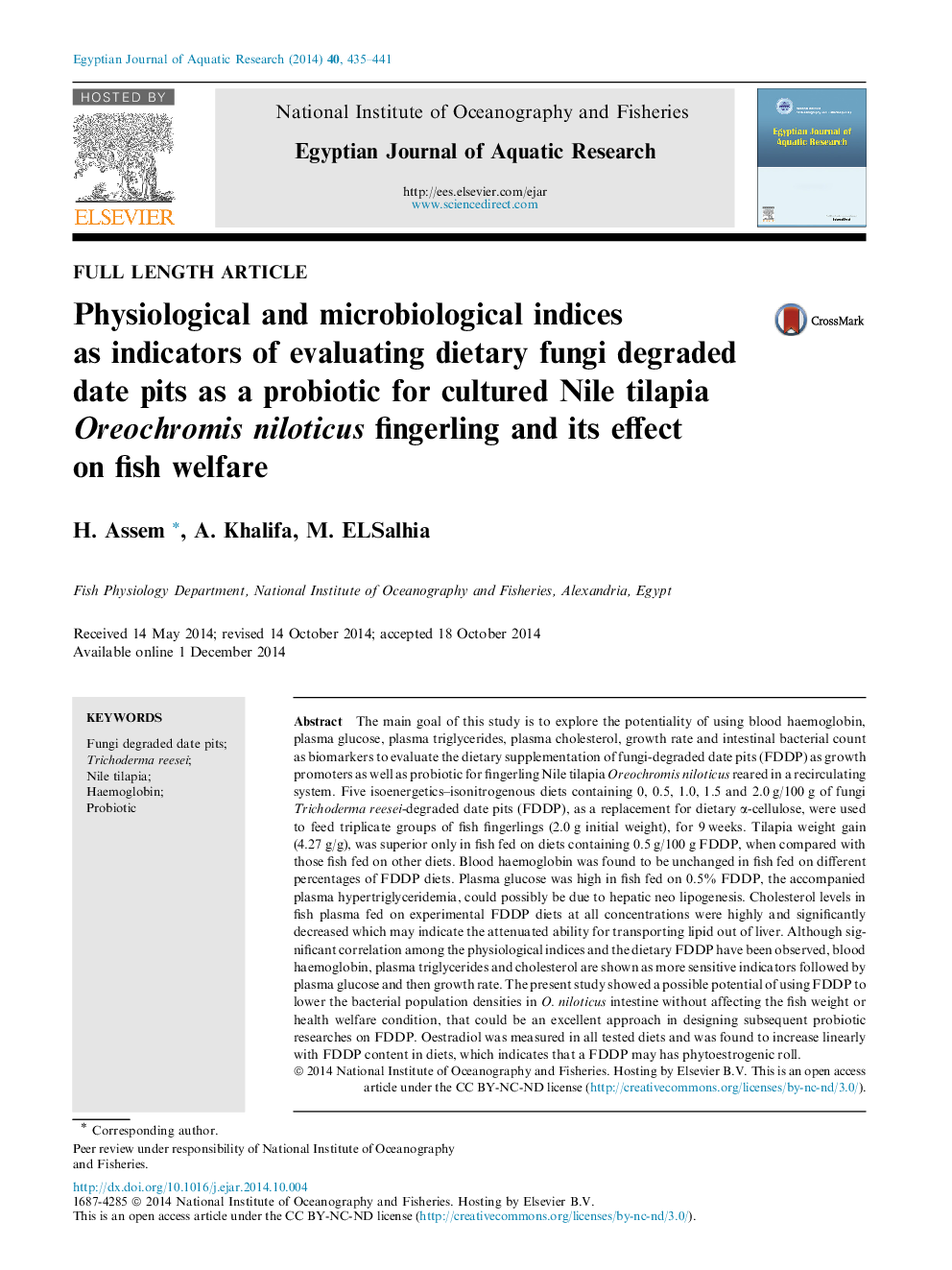| کد مقاله | کد نشریه | سال انتشار | مقاله انگلیسی | نسخه تمام متن |
|---|---|---|---|---|
| 4493120 | 1623617 | 2014 | 7 صفحه PDF | دانلود رایگان |

The main goal of this study is to explore the potentiality of using blood haemoglobin, plasma glucose, plasma triglycerides, plasma cholesterol, growth rate and intestinal bacterial count as biomarkers to evaluate the dietary supplementation of fungi-degraded date pits (FDDP) as growth promoters as well as probiotic for fingerling Nile tilapia Oreochromis niloticus reared in a recirculating system. Five isoenergetics–isonitrogenous diets containing 0, 0.5, 1.0, 1.5 and 2.0 g/100 g of fungi Trichoderma reesei-degraded date pits (FDDP), as a replacement for dietary α-cellulose, were used to feed triplicate groups of fish fingerlings (2.0 g initial weight), for 9 weeks. Tilapia weight gain (4.27 g/g), was superior only in fish fed on diets containing 0.5 g/100 g FDDP, when compared with those fish fed on other diets. Blood haemoglobin was found to be unchanged in fish fed on different percentages of FDDP diets. Plasma glucose was high in fish fed on 0.5% FDDP, the accompanied plasma hypertriglyceridemia, could possibly be due to hepatic neo lipogenesis. Cholesterol levels in fish plasma fed on experimental FDDP diets at all concentrations were highly and significantly decreased which may indicate the attenuated ability for transporting lipid out of liver. Although significant correlation among the physiological indices and the dietary FDDP have been observed, blood haemoglobin, plasma triglycerides and cholesterol are shown as more sensitive indicators followed by plasma glucose and then growth rate. The present study showed a possible potential of using FDDP to lower the bacterial population densities in O. niloticus intestine without affecting the fish weight or health welfare condition, that could be an excellent approach in designing subsequent probiotic researches on FDDP. Oestradiol was measured in all tested diets and was found to increase linearly with FDDP content in diets, which indicates that a FDDP may has phytoestrogenic roll.
Journal: The Egyptian Journal of Aquatic Research - Volume 40, Issue 4, 2014, Pages 435–441